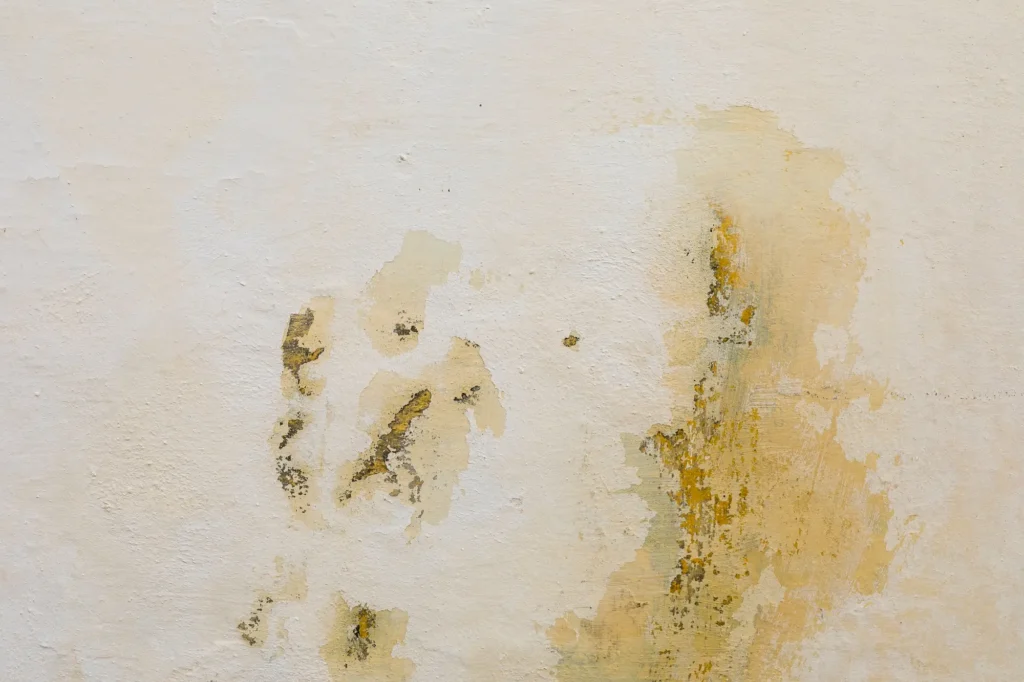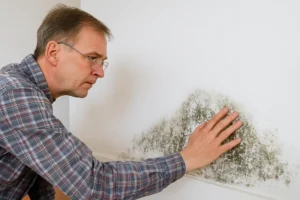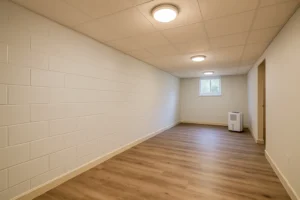When you see water stains spreading across your wall or ceiling, it’s more than just an ugly sight. It’s a signal that something deeper, something hidden, could be happening behind your drywall. Maybe you had a pipe leak, a roof issue, or a flood. No matter the cause, you’re probably feeling overwhelmed, worried about mold, and stressed about how much fixing it might cost.
You’re not alone. Many homeowners feel the same fear and frustration when water damage strikes. The good news? There’s a clear path forward, and it starts with understanding the problem and knowing when to get help.
At Tradewinds Restoration, we’ve helped hundreds of homeowners take fast action after water damage. In this guide, you’ll learn how to dry drywall after water damage, how to recognize if replacement is needed, and when it’s smarter to bring in experts instead of trying to fix it alone.
Understanding the Problem: Why Drywall and Water Don’t Mix
Drywall is tough when it’s dry, but it’s incredibly vulnerable to water. It’s made of gypsum sandwiched between two sheets of paper. Once it gets wet, it absorbs water like a sponge. Over time, that moisture breaks down the drywall’s structure, making it soft, crumbly, and a perfect place for mold to grow.
Because drywall often hides plumbing lines and insulation, even a small leak can cause water to pool inside the walls without you seeing it right away.
The longer the drywall stays wet, the bigger the risk:
- Mold starts growing in 24 to 48 hours
- Wood framing behind drywall can rot
- Insulation can become soggy and useless
That’s why acting quickly matters so much.
Can You Dry Out Drywall? What You Need to Know First
Yes, sometimes you can dry out drywall, but only if you catch it fast and the damage is minor.
If drywall stays wet for more than a couple of days or shows signs of mold, it may need to be replaced.
Here’s the general rule of thumb:
- Light moisture from small leaks: Drying is possible
- Heavy soaking or long-term exposure: Replacement is most likely needed
Before you start drying, always find and stop the source of water first. Otherwise, you’ll end up fighting a losing battle.
Step-by-Step: How to Dry Drywall After Water Damage
Identify and Stop the Source of Water
Check for leaking pipes, roof issues, broken appliances, or flooding around windows and doors. Shut off the water supply if needed. Fix the source before you start drying.
Remove Surface Water Quickly
Use towels, mops, or a wet/dry vacuum to remove standing water near walls and on floors. The faster you remove surface water, the less chance it has to soak deeper into the drywall.
Increase Airflow and Reduce Humidity
Open windows and doors if the weather allows. Set up fans to blow air across the wet areas. Dehumidifiers help pull moisture out of the air, speeding up the drying process.
Tip: If you own an air mover or can rent one, it’s much more powerful than a regular fan for this kind of drying.
Check Behind Walls for Hidden Moisture
Water can sit inside wall cavities where you can’t see it.
Use a moisture meter to test drywall. These inexpensive tools can help you find damp spots behind the surface. Professionals also use thermal cameras to find hidden pockets of moisture without cutting into walls. If the insulation inside the wall is wet, drying becomes harder. Insulation usually has to be replaced if soaked.
Using Dehumidifiers and Fans Properly
Place dehumidifiers near wet areas and keep fans running 24 hours a day until the walls feel dry.
This can take anywhere from 24 hours to several days, depending on the extent of the water and humidity levels in your home.

How Long Does It Take to Dry Out Drywall?
On average, drying drywall takes about 3 to 5 days under good conditions.
But drying time depends on:
- How much water is involved
- How long has the drywall been wet
- Temperature and humidity inside the home
- Air circulation
If drywall still feels cold, damp, or soft after several days, there could be moisture trapped deeper inside, and that’s a sign you need help.
Do I Need to Replace My Drywall After Water Damage?
Sometimes, no matter how hard you try to dry it, drywall can’t be saved.
Here are clear signs that your drywall likely needs to be replaced:
- It feels soft, crumbly, or swollen
- There are visible stains, bubbling paint, or warping
- You notice a musty, earthy smell (a sign of mold)
- Mold appears on the surface or behind the wall
- The paper facing is separating from the gypsum core
Water-damaged drywall loses its strength, making your walls unsafe. If mold takes hold, it’s not just a home repair issue, it becomes a health risk too.
Professionals like Tradewinds Restoration can inspect your walls and tell you whether drying is enough or if replacement is the safer option.
When to Call an Expert for Help
You should bring in professional help when:
- Water has soaked large sections of drywall
- The drywall has been wet for more than 48 hours
- You notice signs of mold
- You’re unsure if the damage has spread
- Moisture is trapped behind walls or under flooring
DIY methods can handle small accidents, but hidden water damage almost always needs professional equipment and experience. Restoration teams can also document the damage properly if you plan to file a homeowners insurance claim.
Important: Home insurance often covers water damage, but they expect you to act fast. Waiting too long to fix the problem can lead to denied claims later.
Can I Fix Water Damage Under Tile Myself?
In minor cases where only the grout is affected and the subfloor remains dry, you might be able to handle small repairs.
However, serious water damage beneath the tile requires professional help.
Professionals can:
- Accurately locate all hidden moisture
- Remove damaged materials safely
- Dry and sanitize affected areas
- Prevent future mold and mildew problems
- Reinstall new flooring if needed
Trying to DIY large-scale water mitigation can leave hidden moisture behind, leading to future problems that are much more costly to fix.
Frequently Asked Questions About Drywall and Water Damage
Is drywall still good after it gets wet?
If the drywall was only lightly wet for a short time and has no stains, swelling, or softness, it might dry successfully. But longer exposure usually means it needs replacement.
Can I just paint over water-damaged drywall?
No. Painting over wet or damaged drywall traps moisture inside, leading to mold growth and worsening the damage over time.
What’s the first thing to do if drywall gets wet?
Stop the source of water immediately, remove surface water, and begin drying with fans and dehumidifiers as soon as possible.
Will mold always grow if drywall gets wet?
Mold can start growing within 24–48 hours in damp drywall. Quick drying can prevent it, but if mold has already formed, the affected drywall needs to be removed.
Don't wait and risk mold or hidden damage
Unsure whether you need to replace your drywall after water damage? Call Tradewinds Restoration. Our experienced team will inspect the damage, dry out the affected areas, and help protect your home from bigger (and more expensive) problems down the road.
Your home deserves expert care. Let’s get it dry, clean, and safe again.





